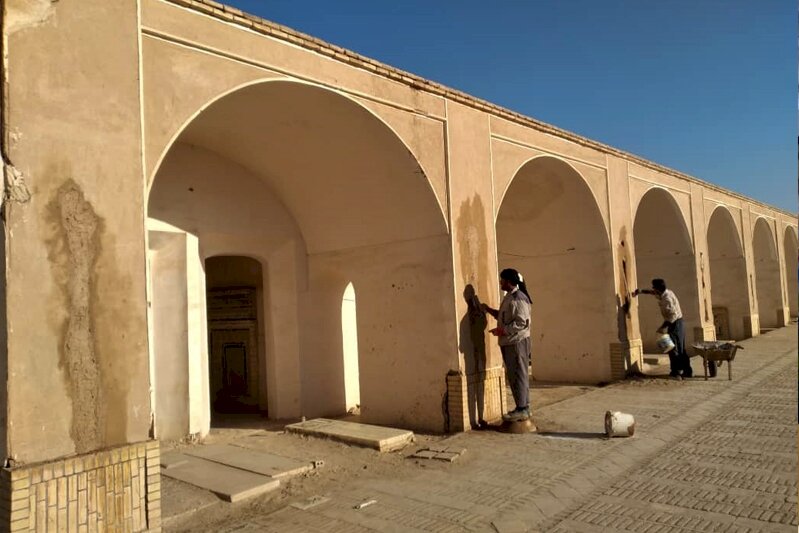Yazd’s centuries-old cemetery restoration works begin

TEHRAN-The centuries-old cemetery of Juy-e Horhor in the central province of Yazd has undergone some rehabilitation work, a provincial tourism official has said.
The restoration project aims at preserving the historical site, which has recently been inscribed on the National Heritage list, Mohammadreza Falahati announced on Sunday.
The project involves strengthening walls and rooftops using cob material as well as repairing the lower parts of walls of the tombs in the cemetery, the official added.
Although the cemetery dates back to centuries ago, the structures and some mausoleums inside it belong to the Qajar-era (1789–1925), he explained.
Juy-e Horhor belongs to both Muslims and Jews with two different entrance gates on the north and south sides. There are several graves of scientists, mystics, literati, and clergymen from different historical eras in the cemetery.
Although there are currently no burials in the Muslim section of the cemetery, the Jewish section, with its 22,000 square meters of area, still retains its use, and religious services are also performed there apart from burying the dead.
In July 2017, the historical structure of the city of Yazd was named a UNESCO World Heritage. Wedged between the northern Dasht-e Kavir and the southern Dasht-e Lut on a flat plain, the oasis city enjoys a very harmonious public-religious architecture that dates from different eras.
With its winding lanes, forest of badgirs (wind catchers), mud-brick houses, atmospheric alleyways, and centuries of history, Yazd is a delightful place to stay, referring to as a ‘don't miss’ destination by almost all travel associates in the region.
Yazd Jameh Mosque, Dowlatabad Garden, the Yazd Atash Behram, also known as Atashkadeh-e Yazd, Towers of Silence, and adjacent desert landscape are among its tourist sites.
ABU/AFM
Leave a Comment